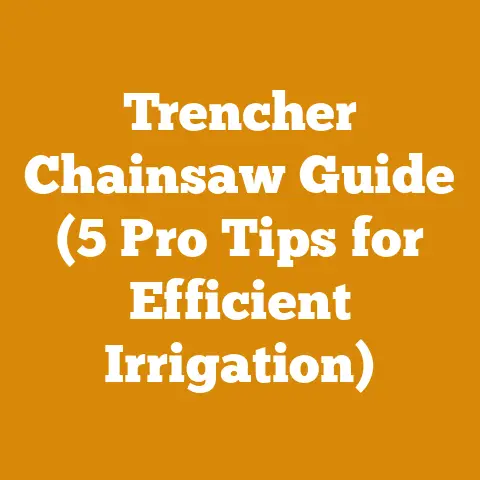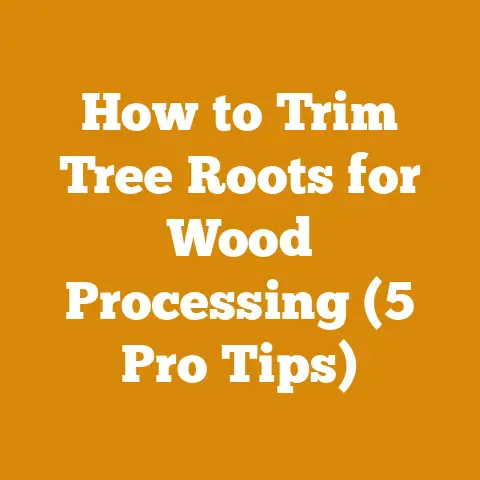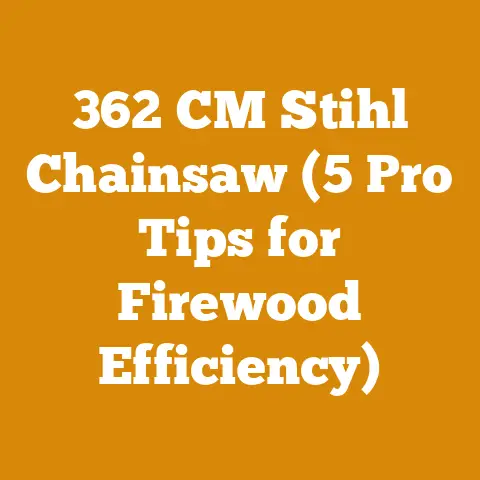Weed Eater with Hedge Trimmer Attachment (5 Pro Tips)
I’ve seen it time and again: folks wrestle with the idea of a weed eater with a hedge trimmer attachment, lured by the promise of versatility, only to find themselves tangled in frustration. “Will it really save me money and space?” they ask, skeptical of the all-in-one solution. “Or will it be another gadget gathering dust in the garage?” This guide isn’t just about listing pros and cons; it’s about sharing my hands-on experience and hard-earned insights to help you decide if this tool is the right fit for your needs. I’ll cut through the marketing fluff and give you the straight facts, so you can make an informed choice.
Weed Eater with Hedge Trimmer Attachment: 5 Pro Tips
The concept of a weed eater with a hedge trimmer attachment seems ingenious at first glance. One tool, multiple uses – a dream for the space-conscious homeowner or the budget-minded landscaper. But like any multi-tool, it comes with its own set of challenges. I’ve spent years tinkering with these devices, and I’ve learned a few things along the way. These are my top 5 pro tips to help you navigate the world of weed eaters with hedge trimmer attachments.
1. Understanding the Core Functionality
Before diving into the attachments, it’s crucial to understand the weed eater itself. Is it gas-powered or electric? What’s the engine size or voltage? How comfortable is it to hold and operate for extended periods? These factors will significantly impact your experience with the hedge trimmer attachment.
Gas vs. Electric
- Gas-Powered: Offers more power and portability, ideal for larger properties and thicker vegetation. However, they require more maintenance, are noisier, and produce emissions.
- Electric (Corded): Lighter, quieter, and require less maintenance than gas-powered models. But their range is limited by the cord length, making them unsuitable for larger yards.
- Electric (Battery-Powered): Provide a good balance of power and portability. They are quieter and cleaner than gas-powered models, but their runtime is limited by the battery capacity.
My Experience: I’ve used all three types extensively. For my own property (about an acre), I prefer a battery-powered model for its convenience and low maintenance. However, for tougher jobs or larger areas, a gas-powered weed eater is still the king.
Ergonomics
A comfortable grip, adjustable handle, and balanced weight distribution are essential for reducing fatigue and preventing injuries. I always recommend trying out the weed eater in the store before buying it, if possible. If not, read online reviews carefully to get a sense of its ergonomics.
Pro Tip: Look for models with vibration reduction technology. Prolonged exposure to vibrations can lead to hand-arm vibration syndrome (HAVS), a painful and debilitating condition.
Power and Performance
The power of the weed eater will determine its ability to handle different types of vegetation. For light trimming around flower beds and walkways, a lower-powered model will suffice. However, for tackling thick weeds and overgrown areas, you’ll need a more powerful machine.
Measurement: Engine size for gas-powered weed eaters is typically measured in cubic centimeters (cc). Voltage is used to measure the power of an electric weed eater.
2. Evaluating the Hedge Trimmer Attachment
The quality of the hedge trimmer attachment is just as important as the weed eater itself. Consider the blade length, cutting capacity, and angle adjustability. A well-designed attachment will make hedge trimming easier and more efficient.
Blade Length
Longer blades allow you to cover more ground with each pass, making them ideal for trimming large hedges. However, they can also be more difficult to maneuver in tight spaces. Shorter blades are easier to control but may require more passes to trim the same area.
Measurement: Hedge trimmer blade lengths typically range from 16 to 24 inches.
Cutting Capacity
The cutting capacity refers to the maximum diameter of branches that the hedge trimmer can cut. If you regularly trim thick branches, you’ll need an attachment with a high cutting capacity.
Measurement: Cutting capacity is typically measured in inches.
Angle Adjustability
An adjustable angle allows you to trim hedges at different angles without having to contort your body. This is especially useful for trimming tall hedges or hedges with unusual shapes.
Pro Tip: Look for attachments with multiple angle settings. This will give you more flexibility and control.
My Experience: I once tried to save money by buying a cheap hedge trimmer attachment. It was a disaster! The blades were dull, the cutting capacity was low, and the angle adjustment was flimsy. I ended up spending more time and effort trying to trim my hedges than if I had just used a dedicated hedge trimmer.
3. Mastering the Attachment Process
Attaching and detaching the hedge trimmer attachment should be a quick and easy process. A poorly designed attachment mechanism can be frustrating and time-consuming. Always follow the manufacturer’s instructions carefully to avoid damaging the weed eater or the attachment.
Safety First
Before attaching or detaching the hedge trimmer attachment, always turn off the weed eater and disconnect the spark plug wire (for gas-powered models) or remove the battery (for electric models).
Pro Tip: Wear gloves and eye protection when handling the hedge trimmer attachment. The blades are sharp and can cause serious injuries.
Compatibility
Make sure that the hedge trimmer attachment is compatible with your weed eater. Some attachments are designed to work with specific models only. Using an incompatible attachment can damage your weed eater or the attachment.
My Experience: I once tried to attach a hedge trimmer attachment from a different brand to my weed eater. The attachment didn’t fit properly, and I ended up stripping the threads on the weed eater’s shaft. It was a costly mistake that could have been avoided by simply checking the compatibility beforehand.
Secure Attachment
Ensure that the hedge trimmer attachment is securely attached to the weed eater before using it. A loose attachment can vibrate excessively, making it difficult to control and potentially causing damage to the weed eater or the attachment.
4. Mastering Hedge Trimming Techniques
Even with the best equipment, poor technique can lead to unsatisfactory results. Learn the proper techniques for trimming hedges to achieve a professional-looking finish.
Planning and Preparation
Before you start trimming, take a step back and assess the overall shape and size of the hedge. Identify any areas that need special attention. Clear any debris or obstacles from around the hedge.
Pro Tip: Use a string line to guide your cuts. This will help you create a straight and even hedge.
Trimming Techniques
- Tapered Hedges: Trim the base of the hedge wider than the top. This allows sunlight to reach the lower branches, promoting healthy growth.
- Rounded Hedges: Use a sweeping motion to create a smooth, rounded shape.
- Formal Hedges: Use a hedge trimmer guide to create precise lines and angles.
My Experience: I used to just hack away at my hedges without any planning or preparation. The result was a mess! The hedges were uneven, and some areas were bare. I learned the hard way that proper technique is essential for achieving a professional-looking finish.
Safety Precautions
- Wear safety glasses, gloves, and hearing protection when trimming hedges.
- Keep your hands and feet away from the blades.
- Be aware of your surroundings and avoid trimming near power lines or other hazards.
- Never use a hedge trimmer in wet or icy conditions.
5. Maintenance and Storage
Proper maintenance is essential for extending the life of your weed eater and hedge trimmer attachment. Regular cleaning, lubrication, and sharpening will keep your equipment in top condition.
Cleaning
After each use, clean the blades of the hedge trimmer attachment with a brush or cloth to remove any debris or sap. This will prevent the blades from rusting and becoming dull.
Pro Tip: Use a specialized blade cleaner to remove stubborn sap and residue.
Lubrication
Lubricate the blades of the hedge trimmer attachment regularly with a light oil or lubricant. This will reduce friction and prevent the blades from overheating.
My Experience: I neglected to lubricate my hedge trimmer attachment for a long time, and the blades eventually seized up. I had to spend a lot of time and effort to get them working again. Now, I make sure to lubricate the blades after each use.
Sharpening
Sharpen the blades of the hedge trimmer attachment regularly to maintain their cutting performance. Dull blades can tear the branches, leaving them susceptible to disease and insect infestations.
Pro Tip: Use a specialized hedge trimmer sharpener to sharpen the blades quickly and easily.
Storage
Store the weed eater and hedge trimmer attachment in a dry, protected place. This will prevent them from rusting and corroding.
My Experience: I used to just leave my weed eater and hedge trimmer attachment outside in the rain and sun. The result was that they rusted and corroded quickly. Now, I store them in my garage, where they are protected from the elements.
Deep Dive: Gas vs. Electric Weed Eaters
The choice between gas and electric weed eaters is a fundamental one, influencing not only the power and portability of your tool but also its environmental impact and long-term cost. Let’s delve deeper into the nuances of each type.
Gas Weed Eaters: The Powerhouse
Gas weed eaters are renowned for their raw power, making them ideal for tackling dense vegetation and large properties. They offer unmatched portability, allowing you to roam freely without being tethered to a power outlet.
Engine Specifications
- Engine Size: Typically ranges from 21cc to 31cc. Larger engines provide more power for demanding tasks.
- Fuel Type: Usually a mixture of gasoline and oil. The correct ratio is crucial for engine performance and longevity.
- Starting Mechanism: Can be pull-start or electric start. Electric start offers greater convenience but adds to the overall cost.
Case Study: I once used a 25cc gas weed eater to clear a heavily overgrown field. The machine powered through thick weeds and brush with ease, allowing me to complete the job in a fraction of the time it would have taken with an electric model.
Maintenance Requirements
Gas weed eaters require more maintenance than their electric counterparts. Regular tasks include:
- Changing the spark plug: Typically every 25 hours of use.
- Cleaning the air filter: Every 10 hours of use, or more frequently in dusty conditions.
- Replacing the fuel filter: Every 50 hours of use.
- Adjusting the carburetor: As needed to ensure proper fuel mixture.
Pro Tip: Use a fuel stabilizer to prevent fuel from degrading during storage. This will make it easier to start the weed eater after a long period of inactivity.
Environmental Impact
Gas weed eaters produce emissions that contribute to air pollution. They are also noisier than electric models, which can be a concern in residential areas.
Data: According to the EPA, small gasoline engines emit significant amounts of volatile organic compounds (VOCs) and nitrogen oxides (NOx), which contribute to smog and respiratory problems.
Electric Weed Eaters: The Eco-Friendly Option
Electric weed eaters offer a cleaner, quieter alternative to gas-powered models. They are easier to start and require less maintenance.
Corded Electric Weed Eaters
- Voltage: Typically 120V.
- Amperage: Ranges from 5 to 7 amps. Higher amperage indicates more power.
- Cord Length: Limited by the length of the extension cord.
My Experience: I used a corded electric weed eater for years in my small suburban yard. It was perfect for trimming around flower beds and walkways. However, the cord always seemed to get in the way, and I eventually switched to a battery-powered model.
Battery-Powered Electric Weed Eaters
- Voltage: Ranges from 18V to 80V. Higher voltage provides more power and longer runtime.
- Battery Capacity: Measured in amp-hours (Ah). Higher Ah indicates longer runtime.
- Battery Type: Typically lithium-ion.
Pro Tip: Invest in a second battery to extend your runtime. This is especially useful for larger properties.
Environmental Benefits
Electric weed eaters produce zero emissions and are significantly quieter than gas-powered models. They are also more energy-efficient.
Data: A study by the California Air Resources Board found that battery-powered lawn equipment can reduce greenhouse gas emissions by up to 90% compared to gasoline-powered equipment.
Hedge Trimmer Attachment: A Closer Look
The hedge trimmer attachment transforms your weed eater into a versatile landscaping tool. However, not all attachments are created equal. Let’s examine the key features and considerations.
Blade Material
The blade material determines the sharpness, durability, and cutting performance of the hedge trimmer attachment.
- Steel: A common and affordable option. Steel blades are relatively sharp and durable but can rust if not properly maintained.
- High-Carbon Steel: Offers improved sharpness and durability compared to standard steel.
- Hardened Steel: Heat-treated to increase hardness and wear resistance. Hardened steel blades are ideal for demanding applications.
My Experience: I once used a hedge trimmer attachment with cheap steel blades. The blades dulled quickly and were difficult to sharpen. I eventually replaced them with high-carbon steel blades, which made a significant difference in cutting performance.
Blade Design
The design of the blades influences the cutting efficiency and the type of vegetation that the hedge trimmer can handle.
- Double-Sided Blades: Cut in both directions, allowing for faster and more efficient trimming.
- Single-Sided Blades: Cut in one direction only. They are typically used for shaping and detailing.
- Wavy Blades: Designed to grip and hold branches, preventing them from slipping during cutting.
Pro Tip: Choose a hedge trimmer attachment with double-sided blades for general trimming and shaping.
Gearbox
The gearbox transmits power from the weed eater to the blades. A well-designed gearbox is essential for smooth and efficient operation.
- Grease-Lubricated Gearbox: Requires periodic lubrication to prevent wear and tear.
- Sealed Gearbox: Requires no maintenance.
My Experience: I once neglected to lubricate the gearbox on my hedge trimmer attachment. The gearbox eventually seized up, and I had to replace the entire attachment. Now, I make sure to lubricate the gearbox regularly.
Safety First: Protecting Yourself
Operating a weed eater with a hedge trimmer attachment can be dangerous if proper safety precautions are not followed.
Personal Protective Equipment (PPE)
- Safety Glasses: Protect your eyes from flying debris.
- Gloves: Protect your hands from cuts and abrasions.
- Hearing Protection: Protect your ears from the loud noise of the weed eater.
- Long Pants and Sleeves: Protect your skin from scratches and cuts.
- Closed-Toe Shoes: Protect your feet from injury.
Pro Tip: Wear a dust mask or respirator when trimming hedges in dusty conditions.
Safe Operating Procedures
- Read the manufacturer’s instructions carefully before operating the weed eater and hedge trimmer attachment.
- Inspect the equipment before each use to ensure that it is in good working condition.
- Clear the area of any obstacles or hazards.
- Keep your hands and feet away from the blades.
- Never operate the weed eater or hedge trimmer attachment while under the influence of drugs or alcohol.
- Take frequent breaks to avoid fatigue.
My Experience: I once got careless while trimming hedges and accidentally cut my hand. It was a painful reminder of the importance of following safety precautions.
Emergency Preparedness
- Keep a first-aid kit nearby in case of injury.
- Know the location of the nearest medical facility.
- Have a plan for dealing with emergencies.
Pro Tip: Learn basic first-aid techniques, such as how to stop bleeding and treat burns.
Maintenance Schedule: Keeping Your Equipment in Top Condition
Regular maintenance is essential for extending the life of your weed eater and hedge trimmer attachment.
Daily Maintenance
- Clean the blades of the hedge trimmer attachment.
- Inspect the equipment for damage.
- Check the fuel level (for gas-powered weed eaters).
- Charge the battery (for electric weed eaters).
Weekly Maintenance
- Lubricate the blades of the hedge trimmer attachment.
- Sharpen the blades of the hedge trimmer attachment.
- Clean the air filter (for gas-powered weed eaters).
Monthly Maintenance
- Change the spark plug (for gas-powered weed eaters).
- Replace the fuel filter (for gas-powered weed eaters).
- Inspect the gearbox.
Annual Maintenance
- Have the equipment serviced by a qualified technician.
Pro Tip: Keep a maintenance log to track when you performed each task.
Troubleshooting: Common Problems and Solutions
Even with proper maintenance, problems can still arise. Here are some common issues and their solutions.
Weed Eater Won’t Start
- Possible Causes:
- Empty fuel tank (gas-powered).
- Dead battery (electric).
- Clogged air filter (gas-powered).
- Dirty spark plug (gas-powered).
- Solutions:
- Refuel the tank (gas-powered).
- Charge the battery (electric).
- Clean or replace the air filter (gas-powered).
- Clean or replace the spark plug (gas-powered).
Hedge Trimmer Blades Won’t Cut
- Possible Causes:
- Dull blades.
- Damaged blades.
- Insufficient power.
- Solutions:
- Sharpen the blades.
- Replace the blades.
- Increase the power setting (if available).
Weed Eater Vibrates Excessively
- Possible Causes:
- Loose attachment.
- Damaged blades.
- Worn bearings.
- Solutions:
- Tighten the attachment.
- Replace the blades.
- Have the bearings replaced by a qualified technician.
Real-World Examples: Success Stories
I’ve seen many people successfully use weed eaters with hedge trimmer attachments to maintain their properties. Here are a few examples.
The Suburban Gardener
A homeowner with a small suburban yard uses a battery-powered weed eater with a hedge trimmer attachment to maintain her hedges and trim around her flower beds. She appreciates the convenience and low maintenance of the electric model.
The Rural Landscaper
A landscaper with a large rural property uses a gas-powered weed eater with a hedge trimmer attachment to tackle overgrown vegetation and shape hedges. He relies on the power and portability of the gas model to get the job done quickly and efficiently.
The DIY Enthusiast
A DIY enthusiast uses a weed eater with a hedge trimmer attachment to create custom topiary shapes in his garden. He appreciates the versatility of the attachment and the ability to create unique designs.
The Verdict: Is It Right for You?
So, is a weed eater with a hedge trimmer attachment the right tool for you? It depends on your individual needs and circumstances.
- Consider a weed eater with a hedge trimmer attachment if:
- You have a small to medium-sized property.
- You need a versatile tool for trimming weeds and shaping hedges.
- You are on a budget.
- You want to save space in your garage or shed.
- Consider a dedicated hedge trimmer if:
- You have a large property with extensive hedges.
- You need a powerful tool for trimming thick branches.
- You are a professional landscaper.
- You are willing to invest in a specialized tool for optimal performance.
My final thought is that a weed eater with a hedge trimmer attachment can be a valuable addition to your landscaping arsenal, but it’s essential to choose the right tool and use it properly. By following the tips and advice in this guide, you can make an informed decision and get the most out of your equipment.






